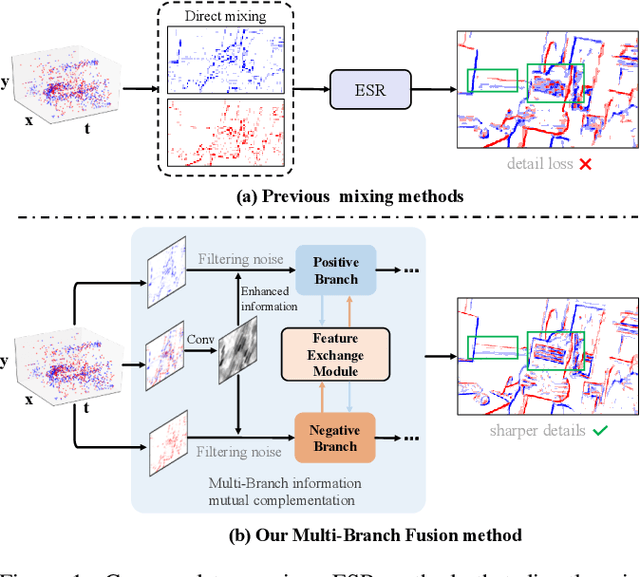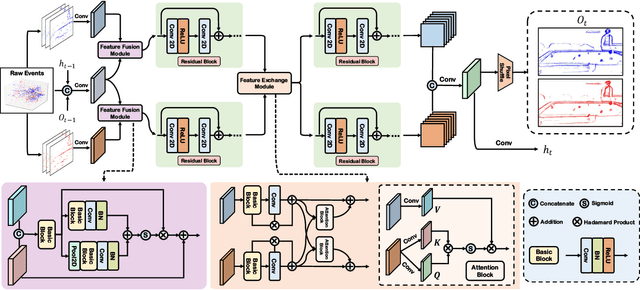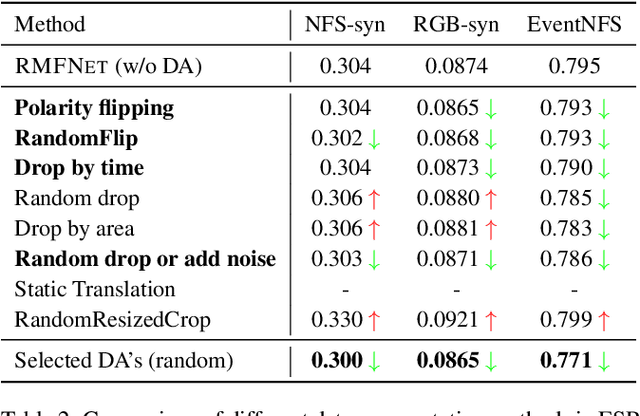Quanmin Liang
Efficient Event Stream Super-Resolution with Recursive Multi-Branch Fusion
Jun 28, 2024



Abstract:Current Event Stream Super-Resolution (ESR) methods overlook the redundant and complementary information present in positive and negative events within the event stream, employing a direct mixing approach for super-resolution, which may lead to detail loss and inefficiency. To address these issues, we propose an efficient Recursive Multi-Branch Information Fusion Network (RMFNet) that separates positive and negative events for complementary information extraction, followed by mutual supplementation and refinement. Particularly, we introduce Feature Fusion Modules (FFM) and Feature Exchange Modules (FEM). FFM is designed for the fusion of contextual information within neighboring event streams, leveraging the coupling relationship between positive and negative events to alleviate the misleading of noises in the respective branches. FEM efficiently promotes the fusion and exchange of information between positive and negative branches, enabling superior local information enhancement and global information complementation. Experimental results demonstrate that our approach achieves over 17% and 31% improvement on synthetic and real datasets, accompanied by a 2.3X acceleration. Furthermore, we evaluate our method on two downstream event-driven applications, \emph{i.e.}, object recognition and video reconstruction, achieving remarkable results that outperform existing methods. Our code and Supplementary Material are available at https://github.com/Lqm26/RMFNet.
Bilateral Event Mining and Complementary for Event Stream Super-Resolution
May 16, 2024



Abstract:Event Stream Super-Resolution (ESR) aims to address the challenge of insufficient spatial resolution in event streams, which holds great significance for the application of event cameras in complex scenarios. Previous works for ESR often process positive and negative events in a mixed paradigm. This paradigm limits their ability to effectively model the unique characteristics of each event and mutually refine each other by considering their correlations. In this paper, we propose a bilateral event mining and complementary network (BMCNet) to fully leverage the potential of each event and capture the shared information to complement each other simultaneously. Specifically, we resort to a two-stream network to accomplish comprehensive mining of each type of events individually. To facilitate the exchange of information between two streams, we propose a bilateral information exchange (BIE) module. This module is layer-wisely embedded between two streams, enabling the effective propagation of hierarchical global information while alleviating the impact of invalid information brought by inherent characteristics of events. The experimental results demonstrate that our approach outperforms the previous state-of-the-art methods in ESR, achieving performance improvements of over 11\% on both real and synthetic datasets. Moreover, our method significantly enhances the performance of event-based downstream tasks such as object recognition and video reconstruction. Our code is available at https://github.com/Lqm26/BMCNet-ESR.
 Add to Chrome
Add to Chrome Add to Firefox
Add to Firefox Add to Edge
Add to Edge